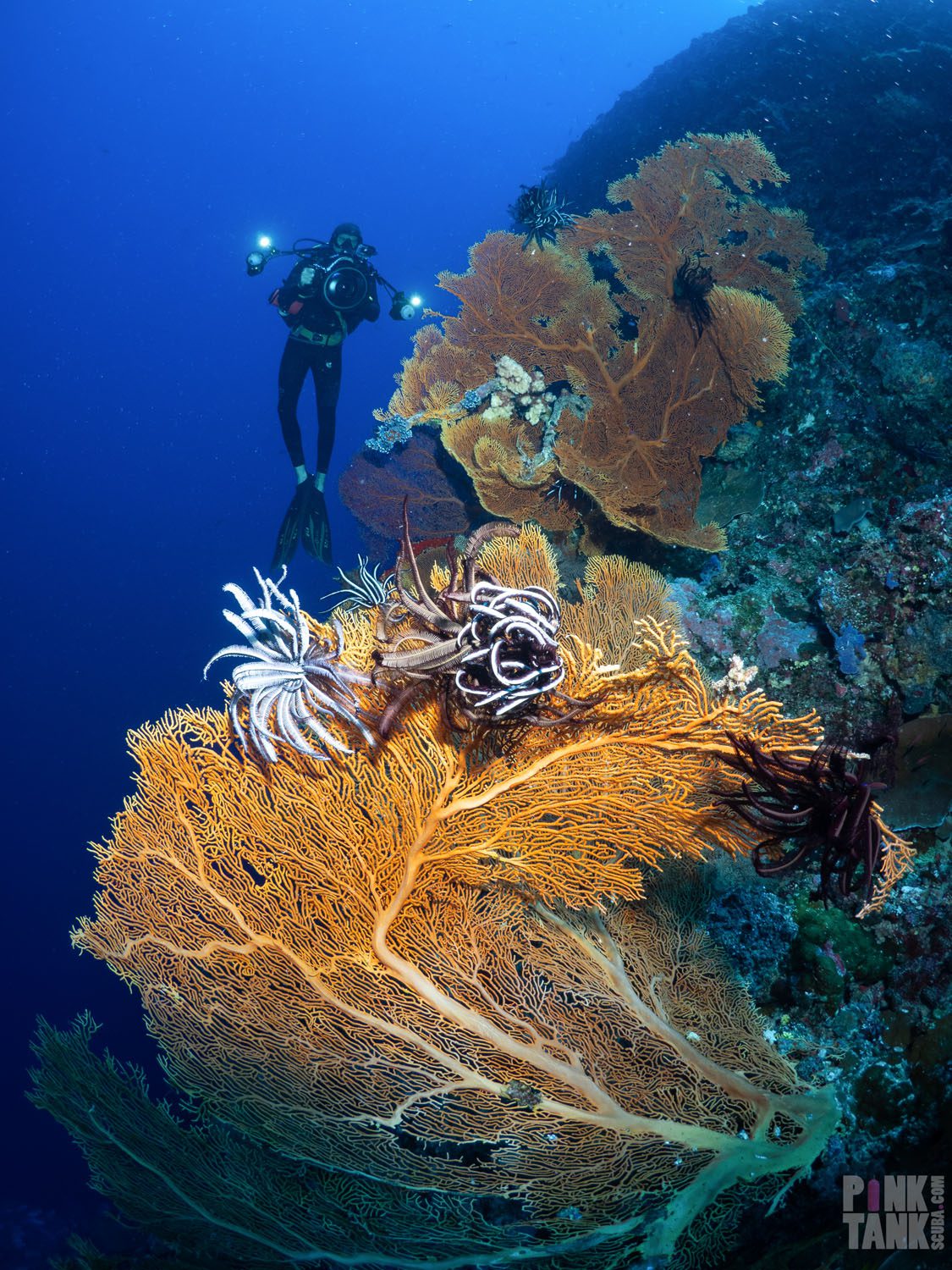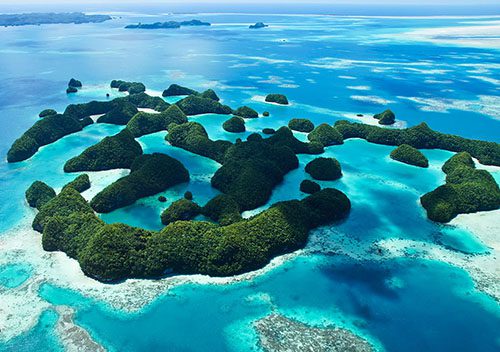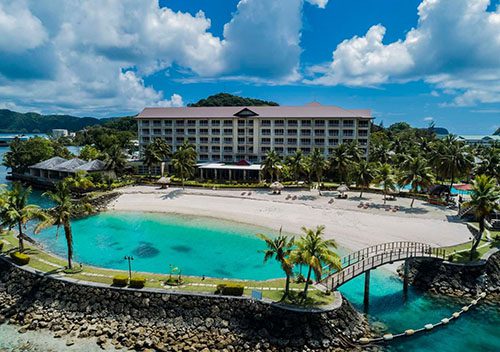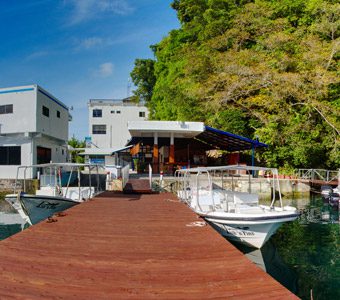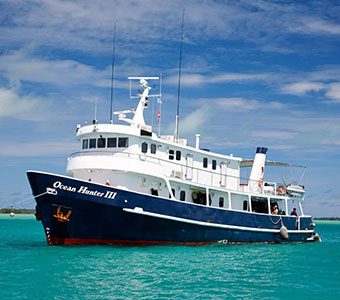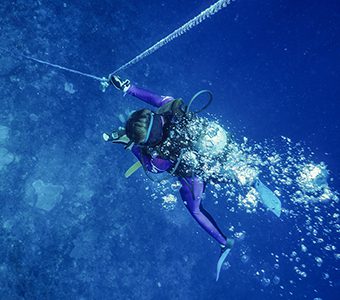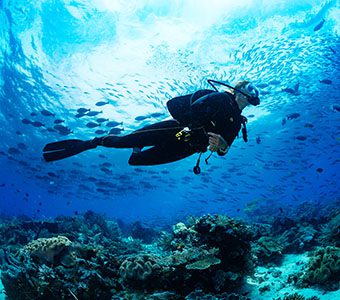Underwater photographer and writer PT Hirschfield (aka Pink Tank Scuba) reviews her recent dive trip to Palau on the Palau Express.
Australian divers are celebrating the new 6 hr direct, once-a-week flight from Brisbane to Palau’s international airport in Koror. The accessibility of this Micronesian Bucket List dive destination is now basically on par with Bali or Thailand.
Anyone who’s previously made the effort to dive Palau’s world-famous wrecks, Blue Corner, Ulong Passage and Siaes Corner will be jumping at the chance to reenter the island nation’s thriving warm water so easily. Aussie divers previously daunted by challenging flight paths and travel costs now have no reason to delay their long-awaited first visit.
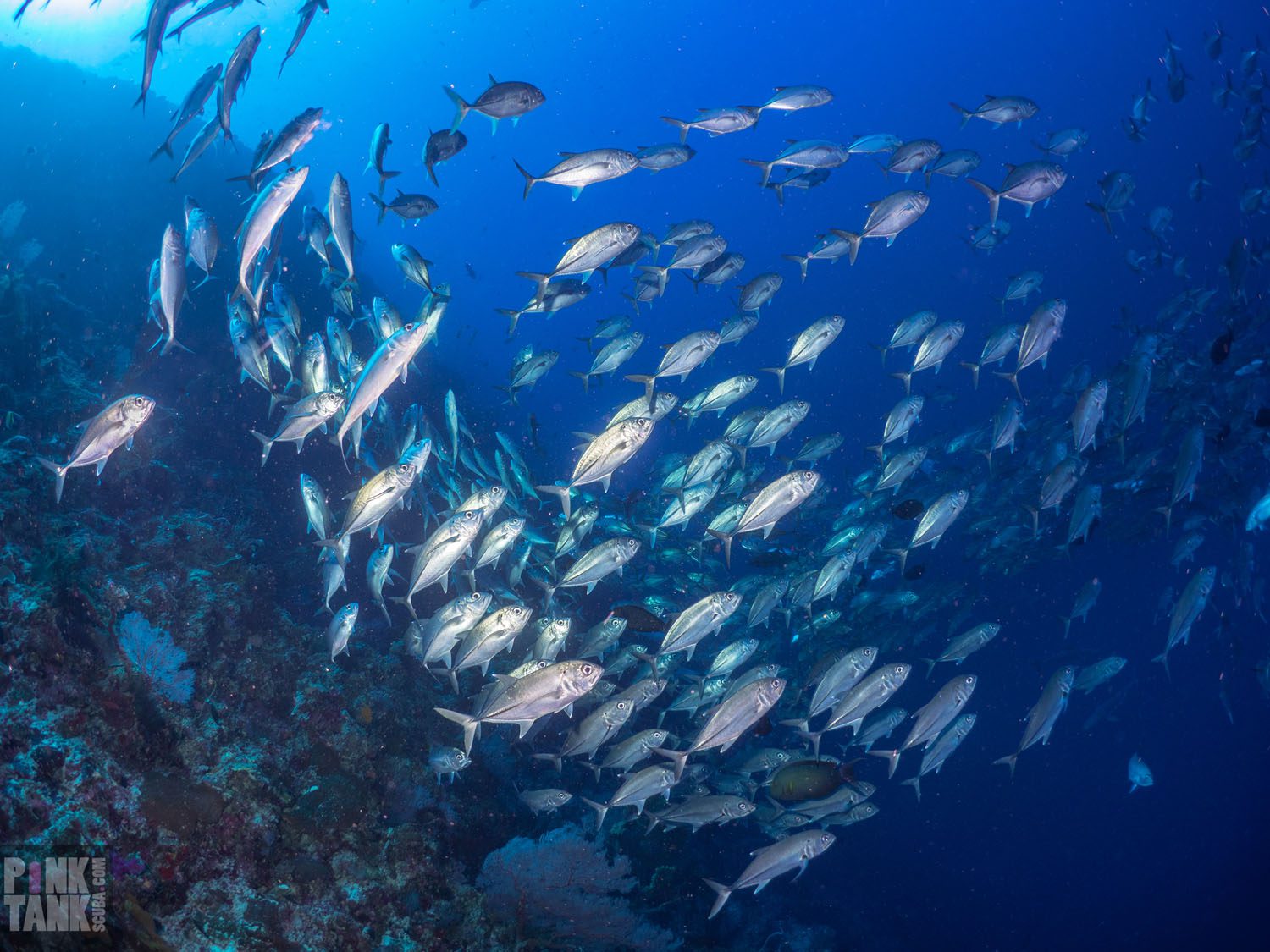
A world leader in marine conservation, Palau declared itself an official shark sanctuary in 2009. With over 80% of its maritime territory protected from fishing, drilling and other potentially adverse human activities since 2015, Palau sets a global standard for ocean health and conservation – a diver’s dreams come true.
The ‘Perfect All-Rounder’, Palau offers a truly satisfying combination of World War II wrecks, caves, walls and healthy coral reefs. There are epic drop-offs and drifts, currents buzzing with sharks, turtles and Napoleon wrasse.
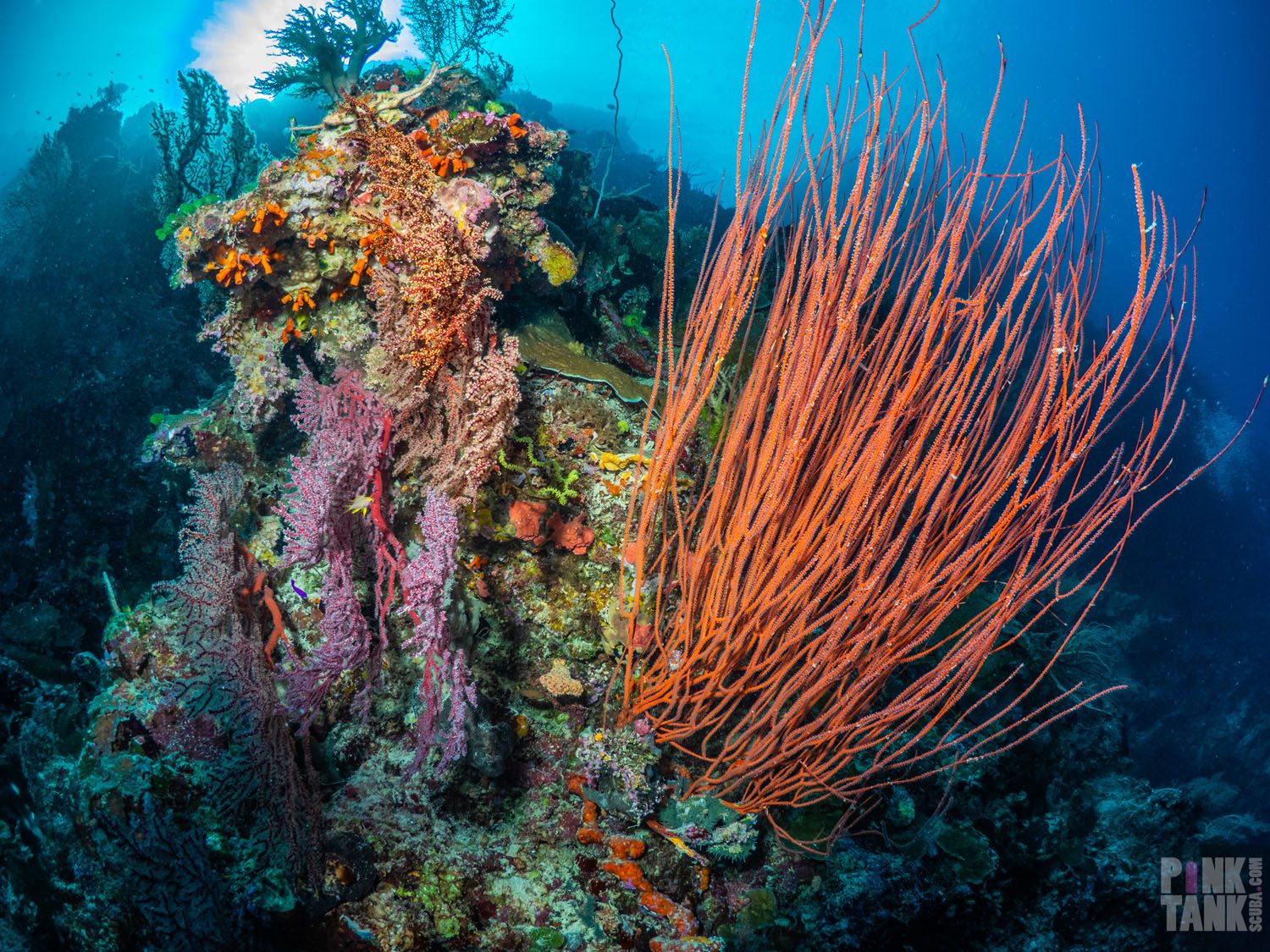
Prepare yourself for a dizzying abundance of pelagics. On many dives, it’s impossible to know where to look, with so much diversity and action unfolding in every direction.
Even in the off-season, if you time the tide right, you can easily get visibility of 30+ metres, coupled with a strong chance of sunny skies and flat seas.
With around 70 stellar dive sites, Palau’s warm water (26-30 degrees year round) delights divers with a broad range of underwater interests. (Want to learn more about the smorgasbord of dive sites on offer? Check out the ‘Palau Diving and Snorkeling Guide’ by Tova Harel and Navot Bornovski. It’s available in hardcopy and has been recently released in digital format.)
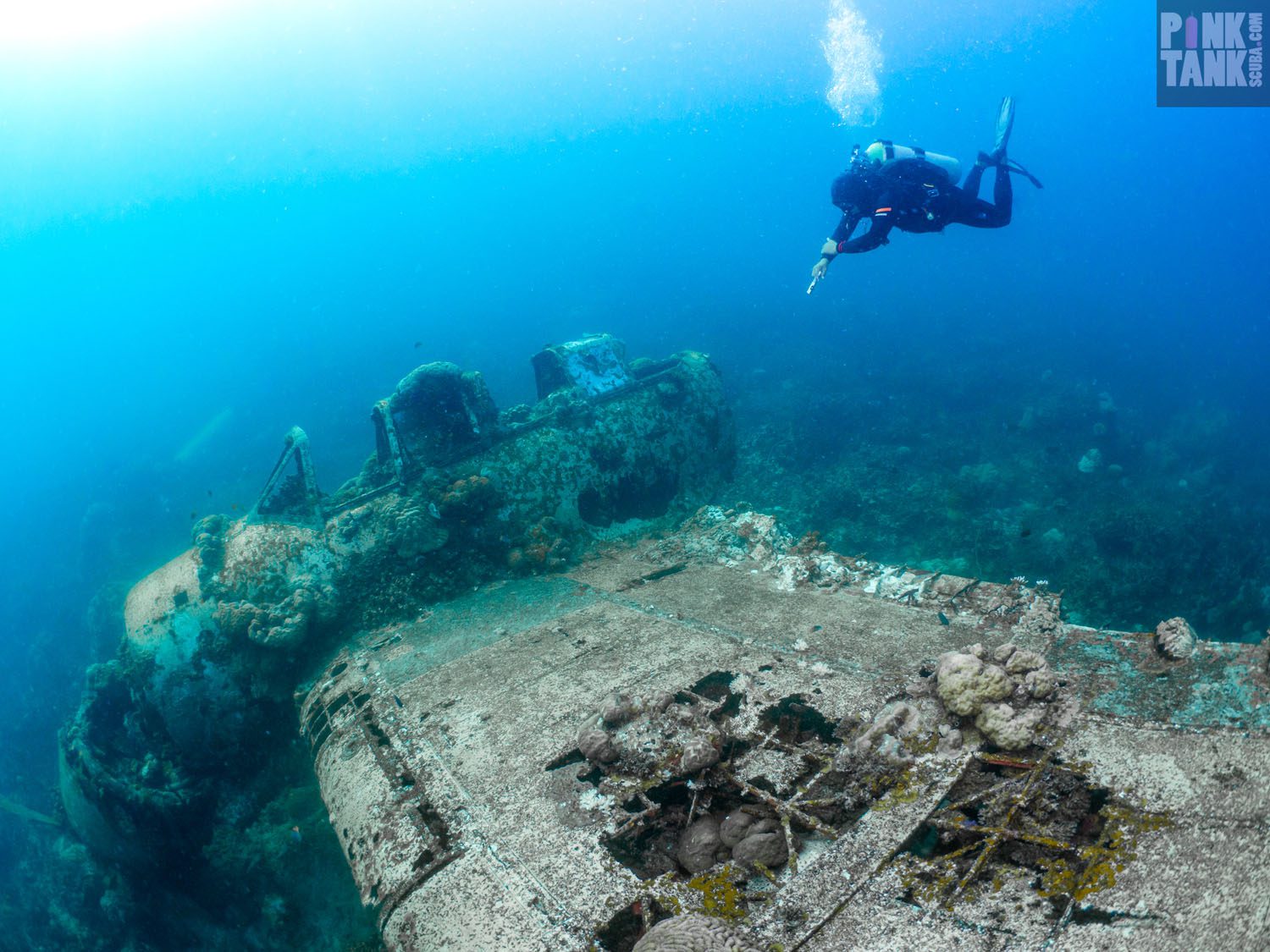
There are a few well-established dive operators on the island. I dived with Fish’n Fins, owned by Tova Harel, one of Palau’s pioneering dive operators. They offer options of land-based diving and scuba adventures aboard the Ocean Hunter III Liveaboard.
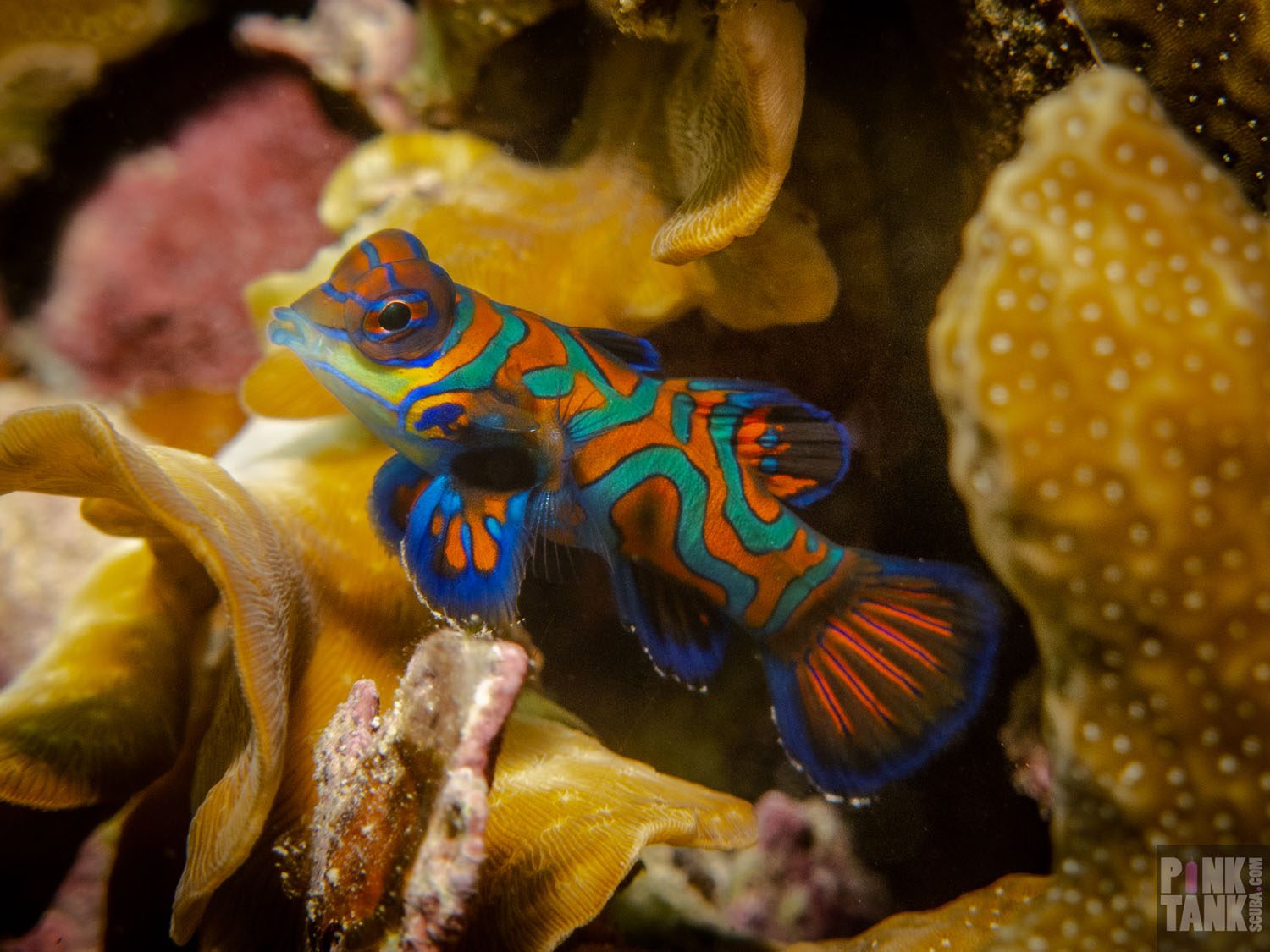
Dive sites are as close as Fish’n Fins house-reef, featuring mandarin fish mating displays at dusk each night, in two metres of water. A ten minute boat ride will take you to the four chambers of Chandelier Cave, with several wrecks nearby.

Dive boats are well maintained and comfortable as you transit through a postcard perfect labyrinth of tiny rock islands. (You’ll probably disembark onto one of these for a packed lunch between dives, easily forgetting that the rest of the world exists. Fans of tv show ‘Survivor’ would no doubt enjoy a brief visit to Ulong Island.)
Around an hour’s boat ride from Koror will take you to some of the world’s most acclaimed dive sites. Expect plenty of sharky action at Blue Corner, and a chance of mantas and sharks at German Channel’s world-renowned cleaning stations.
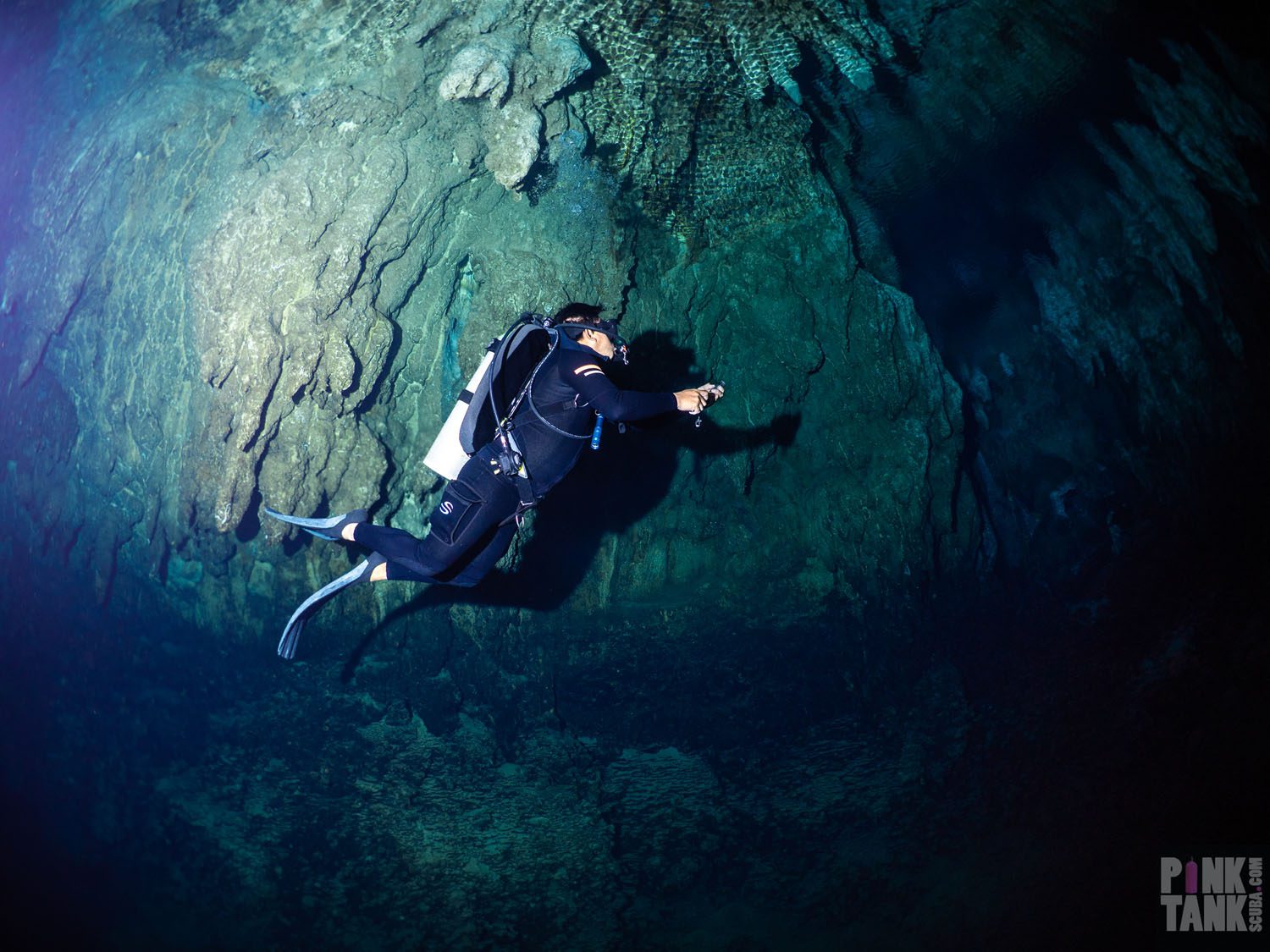
Possibly best suited to experienced intermediate and advanced divers, Palau’s potential for strong currents along epic drop offs make for exhilarating and abundant big critter encounters. Many of Palau’s dive sites are typically teeming with turtles, Napoleon wrasse and sharks galore.
If your visit coincides with a full or new moon, you’re in with a chance to witness the spawning of red snapper, bumphead parrotfish or moorish idols.
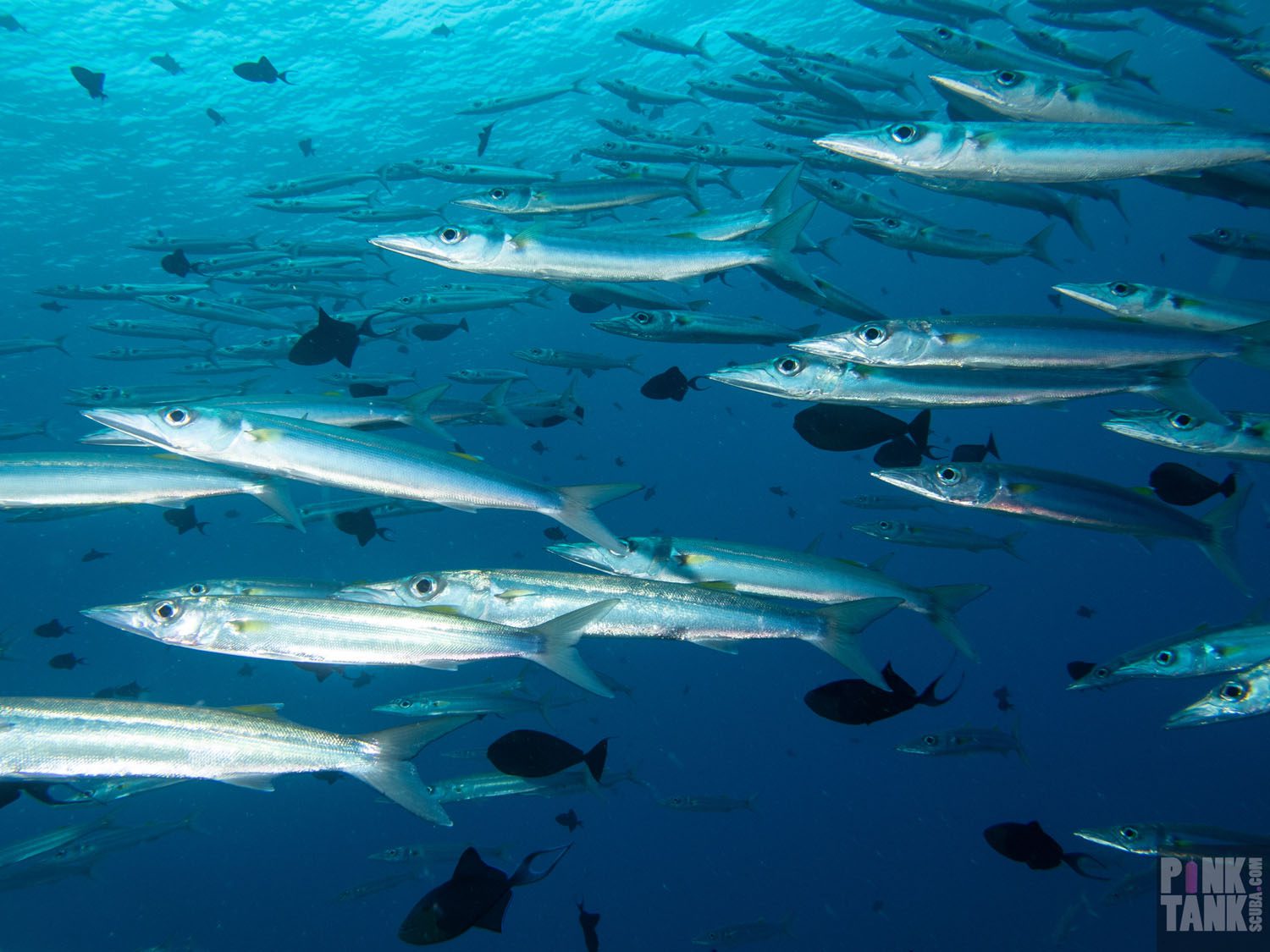
Palau’s magic goes deeper than a veneer of tourism and extends beyond scuba. It surpasses expectations with its pristine natural beauty and cultural warmth.
The island’s mainland is a lush, meticulously clean, modern, family-friendly destination. Non-divers can enjoy snorkelling with sharks in shallow water. Or with golden and moon jellies (though in mid 2024, the famed Jellyfish Lake is still recovering in terms of numbers following recent closures and reopenings). Milky Way mudbaths, glass blowing classes, hotel pools and cultural tours are just some of the activities to keep your loved ones occupied while you dive.

Locals take great pride in maintaining their natural environment, proactively encouraging tourists to do the same. Efforts to make visitors feel safe and welcome feel heartfelt and genuine.
Current schedule offerings will have you boarding Nauru Airlines at 2pm each Friday, arriving in Palau at 7pm. You’ll fly back to Brisbane through the following Friday morning at 5am, landing in Brisbane at 12 noon. This allows for a full week of world-class diving and island exploration.
That’s a massive improvement on previous flight paths that transited through Taipei and Guam. Now the Pacific Paradise of Palau – one of the most expansive and thriving marine protected areas in the world – is well within arm’s reach of all divers travelling from Australia’s east coast.
